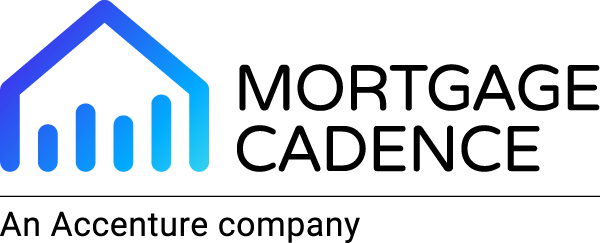The digital threats faced by mortgage lenders are constantly evolving. A glance at the headlines reveals that cyberattacks are becoming increasingly sophisticated. As a result, companies are investing heavily in information security (InfoSec) infrastructure to protect themselves, their customers, and their data.
In the case of Mortgage Cadence, an Accenture company, In additional to our normal annual spend, we have invested an additional $2 million+ over the past year to build a robust InfoSec system to combat these threats. This significant investment highlights the critical importance of cybersecurity in today’s business environment.
Most of the lenders we visit know they must also protect their systems, but many aren’t clear on how much budget to allocate to the task or how and where to spend those resources most effectively.
Let’s explore why companies commit such substantial resources to InfoSec and the key areas where they often allocate their budgets.
The Driving Forces Behind Heavy InfoSec Investments
Every financial institution is different. They do not all approach this task in the same manner or with the same resources, but they are all driven by the same trends.
Increasing Cyber Threats
The frequency and complexity of cyberattacks have surged in recent years. From ransomware to phishing to advanced persistent threats (APTs), businesses face a myriad of risks that can compromise sensitive data and disrupt operations. High-profile breaches and the subsequent financial and reputational damage companies in our own industry have faced have underscored the need for robust cybersecurity measures.
Regulatory Compliance
Mortgage lending is a highly regulated business, and lenders are well aware of the requirements imposed by the various layers of regulatory oversight. Failure to comply can result in hefty fines and legal repercussions, making investments in InfoSec essential for legal and financial protection.
Borrower Data Security
No other industry collects as much sensitive consumer financial information than the mortgage business. This data is both the lender’s greatest asset and greatest risk. Protecting this proprietary information from theft or unauthorized access is crucial for maintaining a competitive edge and safeguarding future growth.
Maintaining Customer Trust
Data breaches erode customer trust, which can take years to rebuild. Investing in strong InfoSec practices helps reassure customers that their data is secure, thereby maintaining and enhancing the company’s reputation.
Business Continuity
Cyber incidents can lead to significant downtime, affecting productivity and revenue. A robust InfoSec infrastructure ensures business continuity by mitigating risks and enabling swift recovery in the event of a cyber incident. We’ve seen this happen to both lenders and their service providers in the past year.
Key Areas of Investment in InfoSec Infrastructure
Building out a sustainable infrastructure that can provide the high level of security required by today’s mortgage lenders requires investments in a number of key areas. The areas listed below do not highlight the entire suite of offerings.
Advanced Threat Detection and Prevention
Companies are investing in cutting-edge technologies such as intrusion detection systems (IDS), intrusion prevention systems (IPS), and next-generation firewalls (NGFWs) to detect and block potential threats. These tools use machine learning and artificial intelligence to identify and respond to suspicious activities in real time.
Endpoint Security
Protecting devices that connect to the network, such as laptops, smartphones, and tablets, is crucial. Investments in endpoint detection and response (EDR) solutions help monitor, detect, and respond to threats on these devices, ensuring they do not become entry points for cyberattacks.
Identity and Access Management (IAM)
Controlling who has access to what information is a cornerstone of InfoSec. Companies are deploying IAM solutions to manage user identities and enforce access policies, ensuring that only authorized personnel can access sensitive data.
Data Encryption
Encrypting data both at rest and in transit is vital for protecting it from unauthorized access. Investments in encryption technologies and key management systems help secure data across the entire lifecycle.
Security Information and Event Management (SIEM)
SIEM solutions collect and analyze security data from various sources to provide a comprehensive view of the organization’s security posture. They help in identifying patterns and anomalies that could indicate a security breach, enabling timely responses.
Employee Training and Awareness
Human error is often the weakest link in cybersecurity. This is especially true in mortgages, where wire fraud can cost consumers hundreds of thousands of dollars when they click on a bad link in an email. Companies are investing in comprehensive training programs to educate employees about security best practices, phishing scams, and the importance of safeguarding sensitive information.
Incident Response and Recovery
Despite the best preventive measures, incidents can still occur. Investing in incident response plans and recovery solutions ensures that companies can quickly contain and mitigate the impact of a breach, restoring normal operations with minimal disruption.
The substantial investment in information security infrastructure is a reflection of the critical need to protect against ever-evolving cyber threats. Companies are allocating significant resources to advanced threat detection, endpoint security, IAM, data encryption, SIEM, employee training, incident response, and cloud security to build a robust InfoSec framework.
By doing so, they safeguard their data, ensure regulatory compliance, maintain customer trust, protect their intellectual property, and guarantee business continuity. In an increasingly digital world, such investments are not just prudent—they are essential for long-term success.
To find out more about how Mortgage Cadence has invested to protect the lenders we serve and to get your specific questions answered, reach out to us today.
Want more?
Follow us on LinkedIn to be notified when our next article is released.
Media Contacts
Mortgage Cadence:
Alison Flaig
Head of Marketing
(919) 906-9738



